Designed by Archstudio, this museum seamlessly merges interior design principles with display, sculpture, visual art and landscape to create a unified and culturally appropriate experience.

August 21st, 2023
Conceived as a museum hidden within a temple, the form of the pergola is central to Archstudio’s design for the Wood Buddha Statue Museum. Set within the Ji Xin Monastery in Zushan Scenic Area of Qinghuang dao City, the mountain side temple’s history dates back to the Song dynasty (960-1279), and is a major tourist destination. As such, the existing temple was rebuilt on its original site in 2002, and this latest architectural incursion is to house a suite of camphor wood statues that have only recently been returned to China from Japan.
Facing eastwards, the temple complex unfolds across the mountain terrain, forming a spatial layout in three courtyards. Locating the museum to the back courtyard, visitors navigate through a corridor of the temple’s main hall, towards a high platform with the three halls of the museum: the Guanxin Hall, the Hall of Medicine Buddha and the Hall of Amitabha Buddha.

While cognisant of needing to create a modern spiritual destination within the original hall, the design borrows from the architectural prototype of “pagoda”. Specifically, the form of the hollow Buddha pagoda which opens the centre of the hall as the main carrier for vertical exhibition. Oval in floor plan, the 30-metre by 16-metre space, with a 20-metre height, has been arranged in the seven layers of the pagoda to grow ever narrower as they rise to meet the square ceiling of the hall.
Borrowing the motif of the mandala for the interior of the pagoda, the space becomes “a consecrated area where all the sages and men of virtues are brought together and a symbol of universe in Buddhism,” says Han Wenqiang, Archstudio founder and chief architect. At the dome of the pagoda, three layers of lighting are installed, with each layer gradually transitioning to a lighter colour to create an upward transition of lighting effect.
Related: Waterside Buddhist Shrine by Archstudio

On the first layer of the pagoda, a thousand-hand Guanyin statue sits in the centre, surrounded by 30 varying Guanyin statues arranged within individual arched openings. The remaining Guanyin statues are exhibited on the fifth to seventh layer of the pagoda (the smallest are placed within specially crafted metal frames resembling tree branches), with two Arya-avalo Kitesvara statues at the centre of the fifth layer.

The pagoda structure, moreover, gives visitors the opportunity to engage in the traditional circumambulation of Buddhist prayer. This is compounded by three additional platforms comprising a ground-floor ring corridor, a mezzanine-floor ring corridor, and a top-floor platform, to give a vertical circulation pattern.
The interior ambient lighting is carefully tailored to the specific environment. To this end, the amount of natural light entering the building is strictly controlled by a translucent film with a transmittance of 9% applied to the exterior glass surfaces. The pagoda’s structural beauty is accentuated through the use of concealed lighting, which illuminates the building’s form.

The side halls in the museum are designated as Sutra Halls, playing a crucial role in the museum’s public education activities. The design capitalises on the height of these halls, approximately 11 metres, by installing luminous metal boards and mirror-surfaced materials to create an elevated ambience and imbues it with an otherworldly, futuristic sense.
Additionally, the walls are constructed with sound-absorbing panels, optimizing the lighting and audio conditions of the lecture hall, while further augmenting the museum’s functionality and spiritual essence. Separated by a significant elevation difference of 10 metres, the main hall and the museum are connected by an existing steep stairway.

In the middle of the stairway stands a stone Guanyin statue, marking a significant area that visitors pass through. As such, this area has also been involved in the renovation project with the landscape extensively reshaped to preserving the temple’s central axis at the Guanyin statue. To enhance the ceremonial experience before entering the museum, the front area landscape has been conceptualised as a “cloud terrace” and the terrace fronting the museum has been landscaped as a ceremonial site.
“The cloud terrace features an exquisite curving form, reminiscent of rippling mists encircling Zushan Mountain. Sprayers, a lawn, and pine trees adorn the platform. As visitors ascend the steps enveloped in ever-changing mist, they’ll gain a sense of tranquility before the three halls finally reveal themselves” says Han Wenqiang. Leveraging the elevations of the terrain, seven sets of exposed aggregate concrete platforms (of differing heights) have been created on either side of the central steps.
Calm, considered and aesthetically in keeping with the traditional Monastery, the Archstudio design is light and contemporary, outstandingly beautiful and aligned to visitor engagement.
Archstudio
archstudio.cn
Photography
Wang Ning, Jin Weiqi, Xiao Shiming




We think you might like this story on the Waterside Buddhist Shrine by Archstudio.
INDESIGN is on instagram
Follow @indesignlive
A searchable and comprehensive guide for specifying leading products and their suppliers
Keep up to date with the latest and greatest from our industry BFF's!

Merging two hotel identities in one landmark development, Hotel Indigo and Holiday Inn Little Collins capture the spirit of Melbourne through Buchan’s narrative-driven design – elevated by GROHE’s signature craftsmanship.

The undeniable thread connecting Herman Miller and Knoll’s design legacies across the decades now finds its profound physical embodiment at MillerKnoll’s new Design Yard Archives.
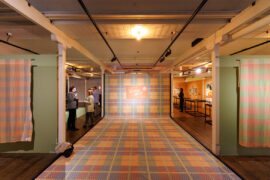
At the National Wool Museum, a new exhibition traces the evolution of Godfrey Hirst and its long-standing role in shaping Geelong’s industrial and design identity.
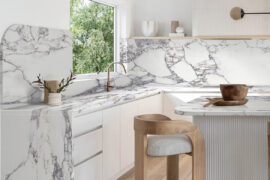
In creating interior spaces that enhance the wellbeing and experience of people, true responsible sourcing also considers the impact of materials and making.

BLP’s new Sydney Children’s Hospital, Randwick building brings together paediatric care, family-centred design and Australia’s first Children’s Comprehensive Cancer Centre in a major addition to the Randwick Health & Innovation Precinct.
The internet never sleeps! Here's the stuff you might have missed
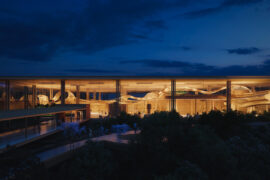
Recognised as winners at the INDE.Awards 2025, Enter Projects Asia in collaboration with SOM have received The Influencer award. Their work on Terminal 2 Kempegowda International Airport Interiors redefines the aesthetics of airport design through a monumental expression of biophilia, sustainability and craftsmanship.
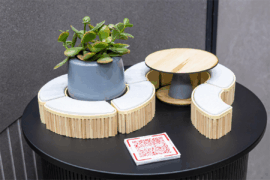
From the spark of an idea on the page to the launch of new pieces in a showroom is a journey every aspiring industrial and furnishing designer imagines making.
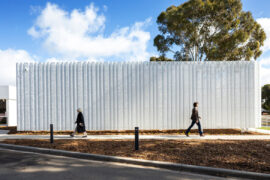
Through expert architecture, EBD Architects has provided a human face to great design and created a project that enhances the lives of people and community.
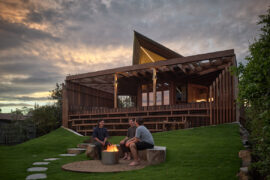
Recognised as a winner at the INDE.Awards 2025, Barton Taylor has received The Photographer – Residential accolade. His photographic work on Cake House captures the soul of a coastal icon reimagined, blending light, texture and atmosphere into a compelling visual narrative.